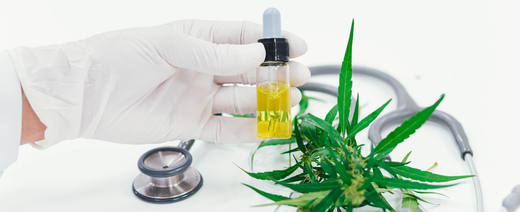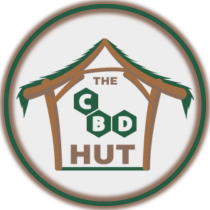
How CBD Products are Made: From Farm to Shelf
🕒 Estimated read time: 3 minutesCannabidiol (CBD) has gained significant popularity for its potential health benefits, leading to a surge in demand for high-quality CBD products. Understanding the journey of CBD from cultivation to the final product is essential for consumers seeking transparency and quality assurance. At The CBD Hut, we are committed to providing premium CBD products, and we believe in educating our customers about the meticulous process involved in bringing these products from farm to shelf.

1. Cultivation of Hemp
The production of CBD begins with the cultivation of hemp plants, specifically selected for their high CBD and low tetrahydrocannabinol (THC) content. Farmers cultivate hemp under strict agricultural guidelines to ensure the plants are free from pesticides and heavy metals, adhering to organic farming practices whenever possible. The quality of the hemp plant is crucial, as it directly influences the efficacy and safety of the final CBD product.
2. Harvesting and Drying
Once the hemp plants reach maturity, they are carefully harvested to preserve the integrity of the cannabinoids. Post-harvest, the plants undergo a drying process to reduce moisture content, preventing mould and degradation of cannabinoids. Proper drying is essential to maintain the plant's potency and prepare it for the extraction phase.
3. Extraction of CBD
The dried hemp biomass undergoes extraction to separate CBD and other beneficial compounds from the plant material. Several extraction methods are employed, with the most common being:
-
CO₂ Extraction: This method uses supercritical carbon dioxide to extract cannabinoids, ensuring a clean and high-quality concentrate without residual solvents.
-
Ethanol Extraction: Utilizing ethanol as a solvent, this technique effectively extracts cannabinoids and terpenes, followed by a purification process to remove any solvent residues.
The choice of extraction method impacts the purity and quality of the CBD extract, with CO₂ extraction often preferred for its ability to produce a cleaner product.

4. Winterization and Filtration
Post-extraction, the crude CBD oil contains fats, waxes, and other plant materials that need removal. The winterization process involves cooling the oil to solidify these impurities, followed by filtration to eliminate them. This step ensures the resulting oil is pure and of high quality, suitable for further refinement.
5. Distillation
To achieve a higher concentration of CBD, the oil undergoes distillation. This process separates cannabinoids based on their boiling points, allowing the extraction of CBD in its purest form. The result is a refined CBD oil, free from impurities and ready for formulation into various products.
6. Isolation (For CBD Isolate Products)
For products requiring pure CBD, the distillate undergoes further processing to isolate cannabidiol from other cannabinoids and compounds. This involves crystallization, resulting in a white, powdery substance known as CBD isolate, which is over 99% pure CBD.
7. Formulation into Products
The purified CBD is then incorporated into a variety of products, each designed for specific applications:
-
CBD Oils and Tinctures: Blending CBD extract with carrier oils like MCT or hemp seed oil for sublingual use.
-
Edibles: Infusing CBD into gummies, chocolates, and beverages for oral consumption.
-
Topicals: Incorporating CBD into creams, balms, and lotions for direct application to the skin.
-
Capsules: Encapsulating CBD oil in gelatine or vegetarian capsules for convenient dosing.
-
Vape Products: Formulating CBD into e-liquids suitable for vaporisation.
Each product type requires precise formulation to ensure accurate dosing, stability, and efficacy.

8. Quality Testing
Before reaching consumers, CBD products undergo rigorous third-party laboratory testing to verify:
-
Potency: Confirming the concentration of CBD and other cannabinoids matches the product label.
-
Purity: Ensuring the absence of contaminants such as heavy metals, pesticides, and residual solvents.
-
Safety: Checking for microbiological contaminants to guarantee the product is safe for consumption.
At The CBD Hut, we prioritise transparency by providing access to lab reports for all our products, ensuring you receive safe and reliable CBD solutions.
9. Packaging and Labelling
Once tested, the CBD products are packaged in appropriate containers that protect them from light, air, and contamination. Accurate labelling provides consumers with essential information, including:
-
Ingredients: A complete list of all components in the product.
-
Dosage Instructions: Guidelines on how to use the product effectively.
-
Batch Numbers: For traceability and quality assurance.
Proper packaging and labelling are crucial for maintaining product integrity and providing consumers with confidence in their purchase.
10. Distribution to Retailers
The final step involves distributing the finished CBD products to retailers like The CBD Hut, where they become available to consumers. Efficient distribution channels ensure that products are delivered promptly and in optimal condition, ready for purchase.

Conclusion
The journey of CBD products from farm to shelf involves a meticulous and regulated process to ensure quality, safety, and efficacy. At The CBD Hut, we are dedicated to offering products that meet the highest standards, providing you with premium CBD solutions you can trust.









